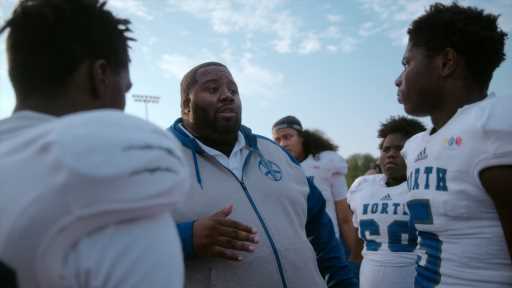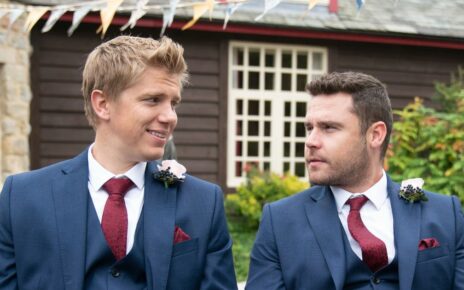While professional football has always captivated American audiences with its gladiatorial drama and drive, it’s at heart a multi-billion-dollar enterprise, propelled by profits and ratings. But amateur football, especially at the high school level, is a galvanizing force for communities, both rural and urban. It brings hope and unity; it’s an escape and an outlet; and for some it’s a pathway out of poverty.
Pete Berg’s Friday Night Lights, the feature film and subsequent long running fiction series about football culture in a small town in Texas, arguably paved the way for such docs as Undefeated, Last Chance U and Outta the Muck, where football serves as the narrative throughline and pretext for a deeper exploration of race and class. Boys in Blue, Berg’s docuseries about a Minneapolis high school football team and the sociocultural challenges that its community faces, premiered on Showtime in January and is now in contention for Emmy consideration.
Related Story
20 Questions On Deadline Podcast: Bryan Cranston On 'Your Honor', An Unusual Documentary Idea, His Adventurous Retirement Plan & Why Therapy Is Vital

When Berg learned about the 2020 murder of George Floyd by a police officer in Minneapolis, he, like everyone else, was horrified. Berg had lived in Minneapolis in the 1980s and 1990s. “When I heard about George Floyd, and that it happened in the Twin Cities,” he recalls, “I didn’t understand how something that violent and horrific could occur at a place that seemed so peaceful to me when I was there.”
Months later, Berg read an article by veteran New York Times journalist Kurt Streeter about Charles Adams, the head coach of the Minneapolis North High School football team–and an officer with the Minneapolis Police Department. “This team was trying to just play football and survive in the middle of what was such a ground zero for unrest at that time,” Berg tells Deadline. “So I thought that going into that community, studying the football program, studying what these cops were going through, who had to stay and do their jobs, post-George Floyd. I thought there was something there.”

In short order, Berg got in touch with Adams and flew to Minneapolis to spend time with him. Fortunately, the coach had appreciated Friday Night Lights, which has served for Berg as “a good calling card” since that series aired over a decade ago. “I said, ‘I would like to try and tell your story. I don’t have an agenda. I believe there’s something quite extraordinary happening in your community. I think it’s probably something that could really benefit us as a society if you were willing to trust me to come in. And they said, ‘Well, OK, come on down.’ And it was then a series of trips, going to football games, going to the school, meeting the teachers, the family members and the kids, talking to the Minneapolis Police Department…But I think they recognized that I had come in peace, I believed in their story, and they actually wanted to have their story told.”

But no matter how transparent Berg was about his intentions, there is the ongoing issue that has been coursing through the documentary community over the past several years: Who gets to tell whose story? –particularly for a white man to document a Black community that’s been rocked with trauma.
“Part of my desire to make this show,” Berg explains, “was acknowledging that, as a white man, there are parts of this country that I do not have access to, that I do not have a deeper understanding of, that it’s much harder for a white man to be accepted into a community like this. And I was very clear that, yes, I am a white man. I am interested in trying to understand and have an access point into what your community is like, so that perhaps, through making a film, we can teach each other a little bit about ourselves, and find out what we have in common and find out where we struggle together, where we succeed together. And after five or six visits, I think they believed me, and they allowed me the privilege of having access to some very, very personal and genuinely private components of their lives.”

Berg and his crew filmed Boys in Blue over the course of a year, during which the high school team was vying for a spot in the state playoffs and the Minneapolis community was considering a measure that would defund the police. A football season and a political campaign have their own baked-in narratives, full of high drama, twists and turns, and heroes and villains. Berg and his team grappled with the challenge of balancing out these parallel, yet intertwined stories. “I was very, very proud of our editorial team for helping me find that balance,” Berg reflects. “We knew that the football season would be the spine of the show. But I was cognizant of not wanting to turn it into a show about football. We would use football as a way in, but fundamentally, we wanted it to be about the community. And the fact that this vote to defund the police was coming up just added intention to the entire experience.”

But as a tragic coda to the series, Deshaun Hill, the quarterback of the team, was murdered on the street, in a random shooting, months after the season was over. Berg and his team were three days from wrapping production when they heard the news.
“This was the most challenging experience of my career,” Berg recalls. “It was heartbreaking. We had 40 people in our crew who’d been there for eight months; many of them had been embedded with Deshawn Hill and his family. And they were just wrecked. All I could think to say at that time was, ‘We’re not going to make sense out of this.’ This was a principal player in our series whom we’d come to really love. We had cuts of the show prior to Deshaun’s murder. The opening scene of the first episode was Deshaun’s mother and father in their house with Deshaun, and his mother was saying that what she’s most scared about is that she felt that somewhere, from school to the bus, something bad can happen to Deshaun–and that’s where it happened. I went back and looked at that scene, and I realized that what she was saying was not, ‘This is what I’m worried about.’ She was saying, ‘We need help. Our community needs help. It’s very dangerous to live in a community like this.’
“After Deshaun Hill was killed,” Berg continues, “I said to our crew, ‘Everything’s different now. We’re not talking about the idea of gun violence in these communities; we are in the middle of gun violence in these communities. And we will make sure that before we put this film out, we will take it back to the community and show it to Deshaun’s family, the coaches, the players, and we’ll listen and make sure that they support this, that they feel this is an accurate presentation of what they’re going through.’ I was happy that his mother said, ‘Go forward with this show. I want people to see that my son was a 15-year-old boy and that this happens every day in America.’”
Must Read Stories
Bob Iger’s Return As CEO Sees A Plot Twist In Abrupt Exit Of Long-Tenured Lieutenant

‘It Ends With Us’ Halts Production After Guild Rejects Wayfarer Argument

Mark Taper Forum Theater Season Canceled Amid Covid Reverberations

‘Star Trek: Picard’ Stars Patrick Stewart, Gates McFadden & Jonathan Frakes

Read More About:
Source: Read Full Article


